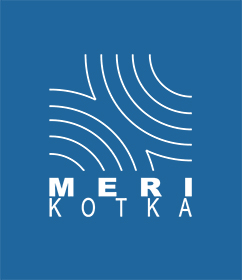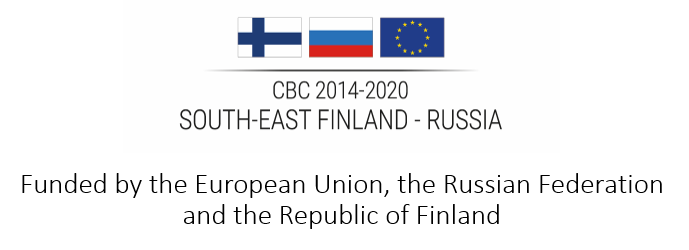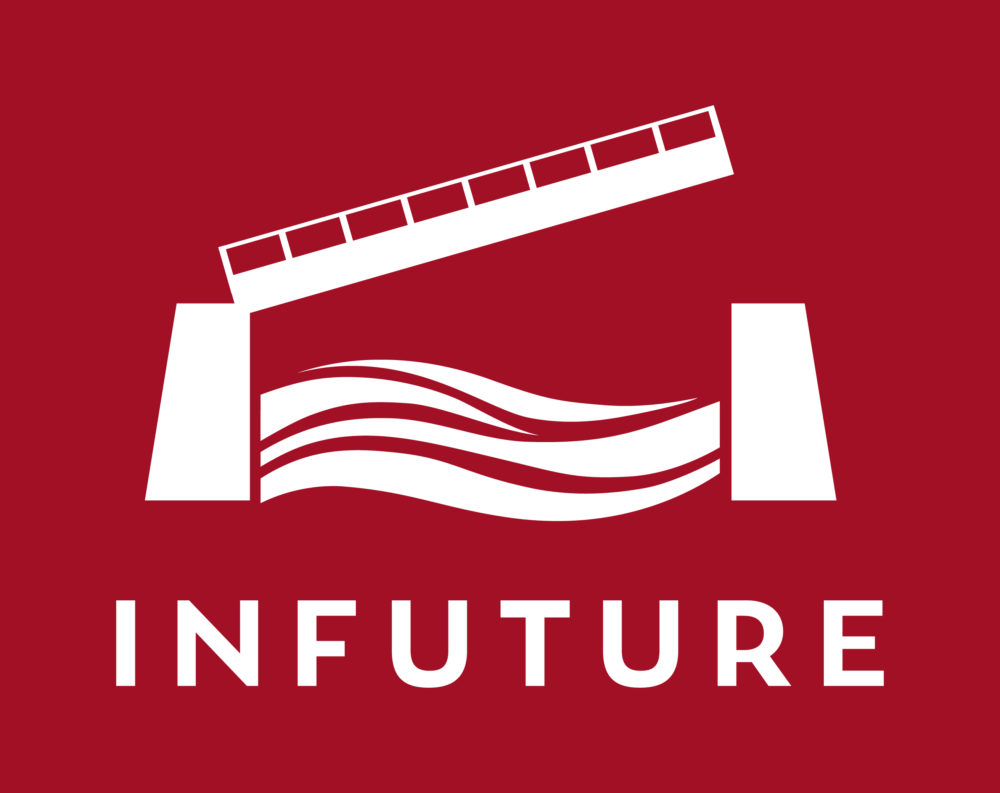- 🡠
- project
- Recent
- Publications
Most international freight traffic happens on roads, such as the busy route between Finland and St. Petersburg. Road transport presents its own set of challenges, including pollution, accidents and road network congestion. Inland waterway traffic, however, could constitute a cost-effective and environmentally friendly option that also attracts the interest of transport companies.
Developing inland waterway traffic
The “Future potential of Inland Waterways” (INFUTURE) project takes a wide-ranging approach to finding solutions for sustainable and cost-effective inland waterway traffic.
We examine the legislation on freight traffic as well as Finnish and Russian customs policies, and identify the most efficient ways of handling cargo. In addition, we are creating an IT system that helps customers quickly find the most suitable service for their cargo transport needs.
Funding
The South-East Finland – Russia CBC 2014–2020 programme is the main contributor.
The total budget for the project is EUR 1,251,538.
Project partners
Kotka Maritime Research Association
Aalto University
South-Eastern Finland University of Applied Sciences
Meritaito Ltd.
Finnish Waterway Association
Admiral Makarov State University for Maritime and Inland Shipping
North-West Russia Logistics and Information Development Centre
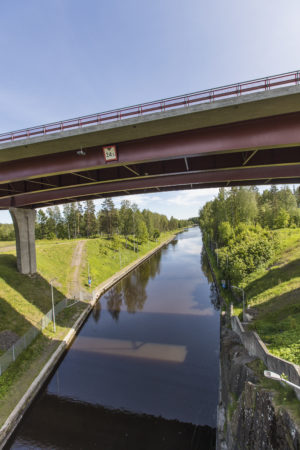
INFUTURE Final conference Tue 30.11. – Wed 1.12.2021
The INFUTURE project seeks comprehensive solutions to support sustainable and cost-effective inland waterway transportation. The INFUTURE project has been implemented in cooperation with Finnish and Russian experts in the field. The work has been funded by the South-East Finland – Russia ENI CBC 2014-2020 program.
INFUTURE FINAL CONFERENCE
Waterways – a step towards a green transition
Tue 30.11. – Wed 1.12.2021
The conference will focus on presenting the research results of the project through four different themes. The first theme, “Towards a Green Transition”, focuses on the EU’s Green Deal and Fit for 55 programs, as well as national emission reduction targets for inland waterway transportation. Another theme highlights the opportunities and potential of inland waterway transport today. The third theme aims to present best practices and smart solutions for the development of inland waterway infrastructure and port operations. The last, fourth session looks at visions for the future of inland waterways as a sustainable mode of freight transport.
In addition to the researchers of the INFUTURE project, the conference speakers will be high-level experts such as
- Marta Wolska, EU Commission, Directorate-General for Mobility and Transport
- Benjamin Boyer and Laure Roux, Central Commission for the Navigation of the Rhine
- Eero Hokkanen, Ministry of Transport and Communications
- Tomi Solakivi, University of Turku
- Claudia Beumer, VT Group
- Jarkko Toivola, Finnish Transport Infrastructure Agency
- Ville Hinkka, VTT Technical Research Centre of Finland Ltd
- Olga Ansberg, Director of Port Logistics, Port of Vyborg
- Kevin Desmond, Inland Waterway International, Alternative Fuels Committee
The INFUTURE Final Conference will be held in Kotka, Maritime Centre Vellamo. You can attend the conference or parts of it both on site and on-line.
Sign up here
The conference is free of charge.
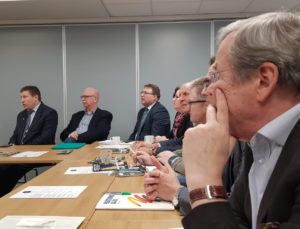
Potential Cargo Flows and Routing in Inland Waterways of Lake Saimaa and Volga-Balt area
The Saimaa Canal has been in operation for 164 years. Today, the largest cargo flows to Saimaa region come from Russia, which is the region’s largest trading partner. The next largest and important partners are the Netherlands, Estonia, Germany, and Latvia, which all have active traffic and trade in the Saimaa region. Cargo is exported even as far as to France and to the United Kingdom from Saimaa. There is no year-round operation in the Saimaa Canal, and therefore the freight figures are not comparable with seaports.
Russia’s inland waterway network is significant, and its south-eastern part in particular is important to Finland. 120 million tonnes of cargo passes through the Russian inland waterway system annually, and there are 131 inland ports in its inland waterway network. For comparison, the total volume of cargo in Finland is about 100 million tonnes. Within the framework of the INFUTURE project, Admiral Makarov State University of Maritime and Inland Shipping has conducted a study of inland waterway traffic and freight flows between Russia and Finland and based on the performed analysis possible potential has been identified.
Inland Waterway Fleet
The current fleet operating on inland waterways is very old, and there is a need for new vessels. The INFUTURE project has concentrated on this issue as well, and the new vessel types for the new Saimaa Canal are under planning. The demand for Volgo-DonMax vessels (max length 141.0 m; max width 16.98 m) is still high. Russian Marine Engineering Bureau is building dry-cargo river-sea going vessels. Total order book is 60 vessels, of which 27 have already been delivered, 22 are under construction, and the rest 11 are in reserve. Most of the delivered ones are modern river-sea going vessels. In addition, there are also two tug barges under construction. Unfortunately, these vessels are too big to navigate via Saimaa canal even after the extension of Saimaa Canal lock chambers.
Development of the Inland Waterway System
Another important issue is also the investment of about EUR 100 million made by the Finnish government for the extension of the lock chambers of the Saimaa Canal. This will allow larger vessels to pass through the Saimaa Canal with bigger cargo volumes. In Russia, there is also a need to develop the inland waterway system. Today the guaranteed depth is 3.6 m in the European side of the Russian Federation, but there are two parts where the depth is even shallower than 3.6 m. The Russian government is investing into inland waterway system to grant the depth of 3.6 m everywhere. There is a need to shift cargo from roads and railroads into inland waterways.
The Russian Federation Strategy for inland development is to modernise and expand their main waterway infrastructure by 2024:
• increase of the capacity of domestic seaports by a third
• increase of the throughput of inland waterways
• the development of the Northern Sea Route
• the development of professional education and training
New cargo flows and routes to Saimaa are of high importance for Russia, including action for shifting cargos from roads and railroads into river-sea going vessels. Inland ports development in both countries and their wider connection into trade will foster local development on multiple fronts: industrial, social, etc. Saimaa’s infrastructural development shall stimulate the replacement of old fleet with new vessels. The limitations of the navigation period on Saimaa and on the Volgo-Balt is also hindering the smooth waterway operations between Finland and Russia.
Harmonisation of Rules and Procedures
There are differences in the legislation of Finland (EU) and Russia on inland water transport and on customs and border procedures. These require some harmonisation in order to develop the passage efficiency via Saimaa Canal. According to the plans of the Russian Federation, the maritime checkpoint will be located exactly in the middle of the canal, and if we do not start a dialogue on the optimisation of customs and border control procedures in advance this may cause problems for shipping from the beginning of operation under the existing rules.
Cargo Volumes via Volgo-Balt, White sea-Onega, and Saimaa
The annual cargo to and from Saimaa is almost 1 million tonnes, and with domestic cargo altogether around 2 million tonnes/year. For comparison, almost 17 million tonnes of cargo is transported annually at Volgo-Balt. Nowadays the main cargo from Russia to Saimaa is timber: raw wood and wood chips. Fertilisers and chemicals as well as iron scrap, metal/iron pigs, and gravel could be potential cargo for this inland route. The most important regions for wood producers are Karelia, Vologda region, and Leningrad region. Neva Hagen shipping company is the Russian company that has been operating with Saimaa cargo for several years.
Pilot Voyage from Saimaa to Cherepovets
In the frames of the INFUTURE project we plan to carry a pilot voyage from Saimaa to Cherepovets with the company Meriaura. For Finnish partners, the idea behind this is to be able to estimate how it is to navigate with their own fleet in the Russian inland waterways. At the moment we are looking for a suitable vessel, and the VolgoBalt Administration has promised to help in defining the right size of the vessel for the pilot. UPM is willing to participate in the INFUTURE pilot project as a cargo provider. It would be a really good addition for the company, if vessels under the Finnish flag could enter the Russian inland waterways. Currently, wood is imported using Russian tonnage, and there is a need for more tonnage.
Request for Cargo Integrator
Within the framework of the INFUTURE project, a customer survey of Saimaa region stakeholders was conducted. In these discussions the environmental issues came up, and also the role of SMEs in shared cargo transport was underlined. The inland waterways could also be used in some project transports. Reliable cargo integrators with experience in a wide range of cargo and cargo groups in Lake Saimaa region are needed and they could develop new business models to serve for example SME. Currently, there is no container traffic in Saimaa, and very little in Russian rivers. European ports compete for the efficiency of transport chains and how to ensure logistics and make the whole chain competitive. Saimaa’s new dimensions and new vessels would also enable container transport. This possibility should be studied more, and there already is a particular interest in special containers.
A cost-effective, safe, and fast transportation route interests the stakeholders.
XAMK is preparing an analytical simulation model that can be used for simulating navigation in the Saimaa on larger ships in different conditions. At the same time, the utilisation of smart devices in navigation can be simulated. Calculations can be made of how long the journey would take by visualising different situations and repeating them. By analysing the results, new businesses can be developed. Within the framework of the project, there has also been discussion on a “transshipment hub” to serve the waterway traffic between Finland and Russia. The digital services play a key role here, with a possibility to assemble complete cargos, book ships and cargo space, get real-time information on fairways and ports, see descriptions of transport chains and alternative routes – and get clear offers on competitiveness of waterways.
New Business Models
New business models and a new attitude towards inland waterway transport are needed. Could there be some kind of incentives to support the companies in shifting their cargo into inland waterways and to develop the whole supply chain environmentally friendly? Lappeenranta, the port of Mustola, is the largest port in the Saimaa region, and has served as a transit port over the years. In addition to the Mustola logistics center, Lappeenranta has a passenger port and a marina, as well as an airport. Mustola has 7 piers and the location is ideal; 10 km from the center and 15 km from the border. Mustola is also significant as a storage area. The Saimaa Canal is close by and has good rail and road connections.
How to further develop Lappeenranta’s Mustola multimodal logistics centre, and specifically how to support the better utilisation of water transport? How to get industry and trade involved? How to manage the development of the entire transport chain and new service concepts, as well as marketing cooperation and information systems? Could the “Port of Saimaa” be the answer to all this?
The idea of the “Port of Saimaa” is to form a network of active cargo ports in the Saimaa region; Lappeenranta, Joensuu, Kuopio, Savonlinna, Imatra, and Varkaus. The “Port of Saimaa” would be presented to the clients and in the market as one big cargo port. If there is a commercial interest, it will be possible to solve most of the organisational and legal problems, including attracting new cargo, and issues on shifting cargo from road and rails into waterways. Continued dialogue and collaborative meetings such as round tables are needed between the stakeholders and administrative authorities.
Author:
Heli Koukkula-Texeira, Finnish Waterway Association
Round Table speakers:
Pekka Koskinen, Partner, Brave Logistics Oy
Anatoly Burkov, Admiral Makarov State University for Maritime and Inland Shipping
Esa Korhonen, UPM Metsä
Toomas Lybeck, South-Eastern Finland University of Applied Sciences
Hannu Lappalainen, Lappeenrannan Satama
Maksim A. Nevezhin, Head of FGU Saimaa Canal
Andrei L. Yushchenko, Marine Freight Bureau
Anton A. Svechkarev, Neva-Hagen
Dmitry S. Neslukhov, Neva-Hagen
The Russian RT discussion was held on 22.10.2020 and the Finnish on 26.10.2020
Text originally published in https://www.vesitiet.org/post/potential-cargo-flows-and-routing
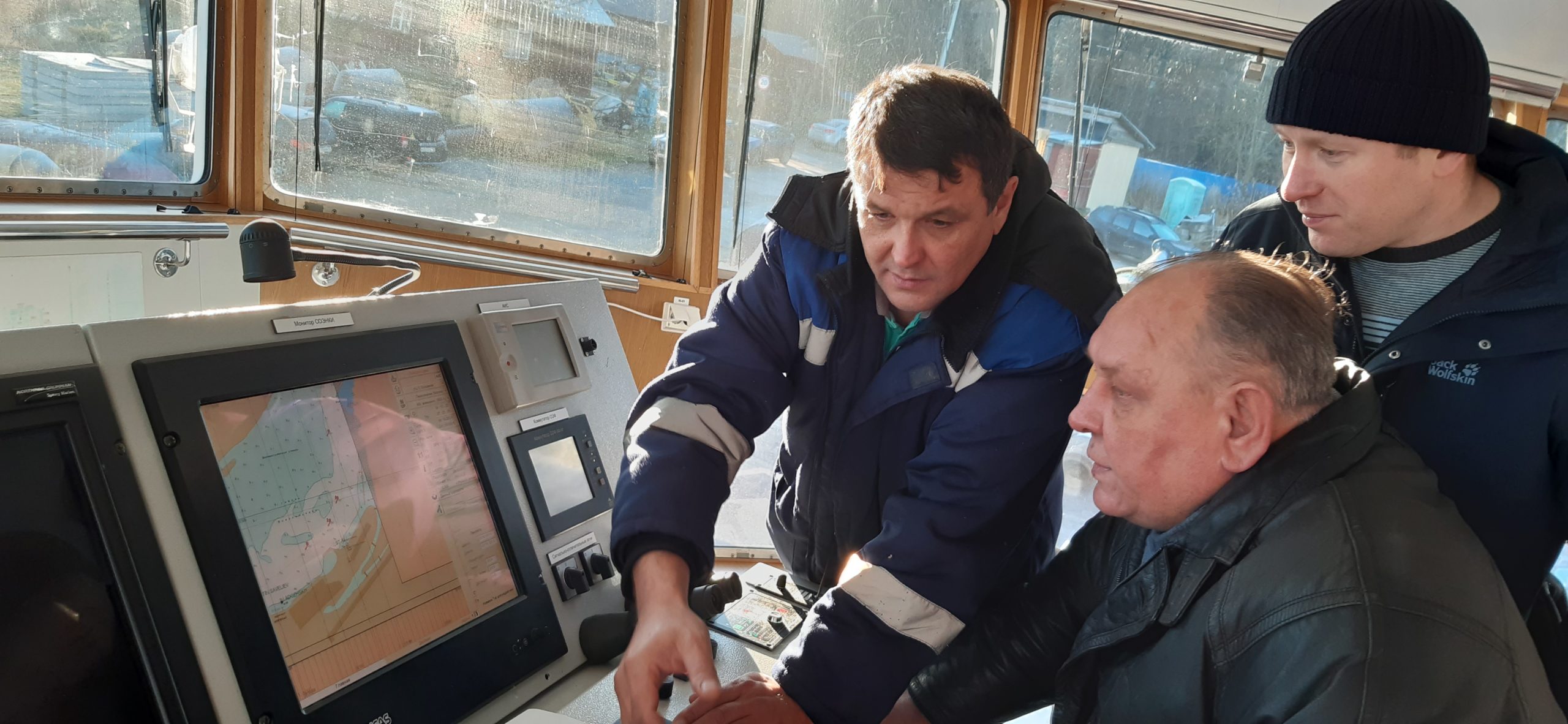
Installation and start of practical testing of Finnish buoys
November 10th was a benchmark for Admiral Makarov State University of Maritime and Inland Shipping (GUMRF) and other partners within the Future Potential of Inland Waterways (INFUTURE) transborder cooperation project.
Thanks to the joint activities of the university and the Administratsiya Volgo-Balt organisation (FBU), the first buoy made by SeaHow by Arctia (Meritaito) Ltd. was installed in the Neva River water area near Schlusselburg.
The event took place as an independent practical experiment, part of the second working package “Inland navigation using advanced technologies and navigation equipment.” The experiment’s goal is to check the usability of the innovative buoys for the year-round operation in the Russian north-west.
The ice testing will be carried out in the Volga-Baltic water area. The installed buoy has an innovative structure that keeps it vertical under the pressure of the current. It also has a double anchor chain fixture. This should keep the buoy vertical despite of river current and ice. If one fixture breaks, then the other should keep the buoy in place. The buoy also has a regulated lamp with an adjustable visibility of two to five miles. More than 25 thousand similar buoys operate in Finland year-round and are not taken out of the water before freeze-up. This saves a substantial amount of resources and the effort of the companies in charge of navigation equipment operation.
Vladimir Karetnikov, head of the Inland Shipping Chair of Admiral Makarov State University of Maritime and Inland Shipping; Anatoly Burkov, a docent at the GUMRF Water Transport Management Chair and INFUTURE project manager; and Yevgeny Nabatov, Arctic SeaHow Meritatito Ltd. representative in Russia attended the buoy preparation and installation. The Nevsko-Ladozhkyi waterways area navigation department and the Volgo-Balt Administration Federal Budget Company’s installation team led by Sergey Rudykh, the head engineer, performed the installation work. The buoy was prepared and correctly installed according to instructions and took its operational position at the edge of the navigation pass.
Next week, another buoy will be installed in the Ladoga Lake water area. The experiment will continue until navigation begins next year.
Text
Vladimir Karetnikov
Admiral Makarov State University of Maritime and Inland Shipping
St. Petersburg, Russia

Invitation to participate – INFUTURE Round Tables
Operational and Safe Inland Navigation Between Finland and Russia
Most international cargo traffic between Finland and Russia goes on land, via roads and railways. Inland waterway connection from Saimaa to Russian inland waterways could constitute a potential environmentally friendly option for transportation between the countries.
Each Round Table includes short introduction to the theme, presentations on findings and time for comments and also for Q & A.
Please note, registration is necessary
Registration here
============
Round Table 1:
POTENTIAL CARGO FLOWS AND ROUTING
Monday 26.10.2020 at 14.00-15.30
Teams- on line meeting
Discussion mainly in Finnish
Speakers
Pekka Koskinen, Partner, Brave Logistics Oy, chairman of the INFUTURE steering group
Anatoly Burkov, Associated Professor, Admiral Makarov State University for Maritime and Inland Shipping
Esa Korhonen, UPM Metsä
Toomas Lybeck, Project Manager, South-Eastern Finland University of Applied Science
Hannu Lappalainen, Port of Lappeenranta
============
Round Table 2:
SMOOTH INLAND NAVIGATION WIHT ADVANCED FAIRWAY TECHNOLOGY
Tuestday 3.11.2020 at 14.00-15.30
Teams- on line meeting
Discussion mainly in Finnish
Speakers
Seppo Virtanen, SeaHow By Arctia (Meritaito) Ltd
Kari Pohjola, SeaHow By Arctia (Meritaito) Ltd
Vladimir Karetnikov, Admiral Makarov State University for Maritime and Inland Shipping
commentary speakers from Russia and from Finland
============
Round Table 3:
FUTURE INLAND WATERWAY VESSELS
Thursday 26.11.2020 at 14.00-15.30
Teams- on line meeting
Discussion in English
Speakers
Pentti Kujala, Aalto University
Fang Li, Aalto University
Jukka Salminen, Aker Arctic Ltd
Marina Lebedeva, Admiral Makarov State University for Maritime and Inland Shipping
Leonid Vishnevskii, Krylov State Research Centre
Jarkko Toivola, Director/Vice President, Alfons Håkans
Please note, registration is necessary
Registration here
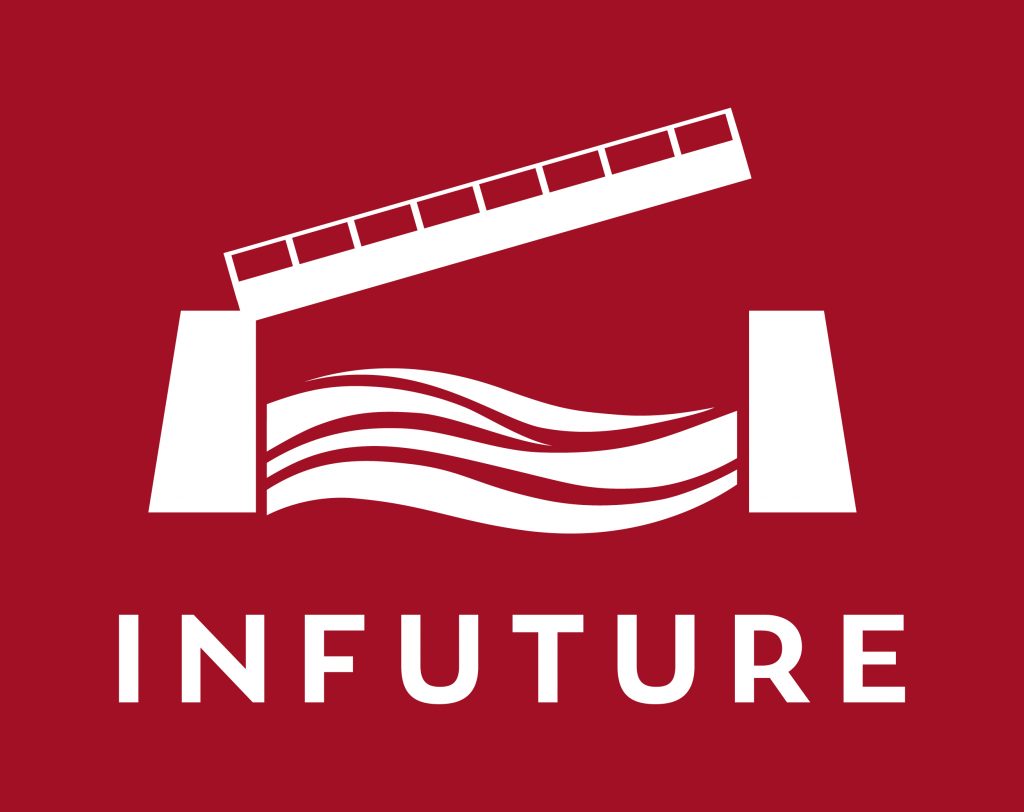

Potential of Inland waterways is truly seen!
Finnish Waterway Association organised Winterdays 2020 – seminar in Lappeenranta on Wednesday 29 Jan 2020. The main theme of the seminar was focused on sustainable development and the role of inland waterways in this context. Experts of INFUTURE project were actively involved and several project related presentations were held. It was clearly seen that inland waterways are considered as a potential way of transportation. In the event, almost 90 participants was involved!
On Tuesday 28 Jan, INFUTURE project organised special Round Table discussion, which was targeted to clarify possibility to implement pilot travel to Russian inland waters. As a result, clear list of tasks related to needed conventions and permissions was received.
Material presented during the Round Table discussion could be downloaded here.
- Pekka Koskinen, INFUTURE chairman of the project steering group
- Toomas Lybeck, Southeastern Finland University of Applied Science (in Finnish)
- Anatoly Burkov, Admiral Makarov State University for Maritime and Inland Shipping (in Russian)
- Mikhail Pimonenko, North-West Russia Logistics and Information Development Centre
- Anatoly Burkov & Tatiana Pantina, presentation held in Winterdays 29.1.2020
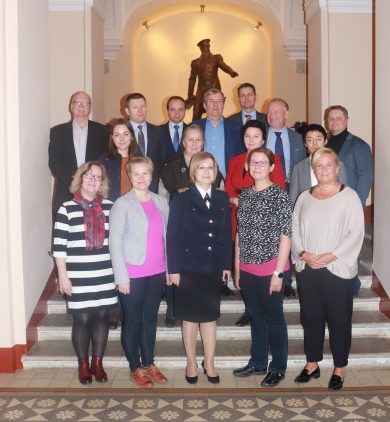
Comprehensive Academic Studies on Finnish – Russian IWW
INFUTURE Steering Group and Working Group meetings were held in St. Peterburg at the Admiral Makarov State University of Maritime and Inland Shipping October 15-16th.
The Chairman of the Steering Group, Pekka Koskinen, as opening the meeting noted that the project has been on-going for a year now and it is time to have a look on the results so far.
All 4 work packages presented the outcomes so far including very comprehensive academic studies and practical analyses.
1) Transshipment Hub Development – Cargo potential from both sides, Finnish and Russian, has been studied and evaluated
2) Inland Waterways Fairway Technologies – the water areas have been studied and analyzed. The aim is to conduct a pilot on the Neva river.
3) Inland Waterway Vessel Concept – based on the information from the WP1 a new vessel type concept for multipurpose vessel has been studied. The aim is the have a design of this vessel by the end of the project.
4) Dissemination and Stakeholder Engagement – A lot of work has been done within the WP1-3 and now we have good material for dissemination and having round tables, like within the NEVA Trans.
The next steps on each work packages were also agreed during these two meetings.
The project members visited the Museum of the Admiral Makarov State University of Maritime and Inland Shipping, which tells about the history of academic maritime education.
Text: Heli Koukkula-Teixeira
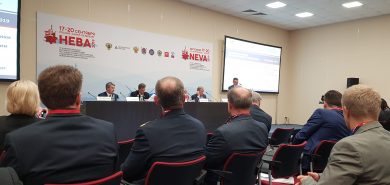
INFUTURE Seminar: Inland Waterways and Cargo Potential
In conjunction with the 15th TRANS Neva Maritime and Shipping Industry Exhibition in St.Peterburg a Seminar on Inland Waterways and Cargo Potential was held September 18th, 2019.
The Seminar was organised in the frames of the “Future Potential of Inland Waterways – INFUTURE project”, which is a CBC Programme 2014-2020 project, funded by the European Union, the Russian Federation and the Republic of Finland.
The programme of the seminar consisted of three sessions: 1) Cargo potential of inland waterways of Republic of Finland at Saimaa and Russian Federation at Volgo-Balt basin; 2) Safe fairways – up-to day technologies for fairway and waterways infrastructure; 3) New IWW vessels for efficient “river-sea” navigation via Saimaa and Volgo-Balt and in shortsea.
The seminar was opened by the Rector of the Admiral Makarov State University of Maritime and Inland Shipping Sergey Olegovich Baryshnikov. He underlined the importance of education of the next generation in maritime and inland shipping.
The Vice-Rector for Science and Research Tatyana Alekseevna Pantina presented the Russian Inland Waterway Strategy 2030. The aim of the improvements of inland navigation in Russian is to increase the cargo volumes, to shift some of the cargo volumes from congested roads and railroads to waterways, which is an environmentally friendly transport mode. Modernization of IWW system is necessary, and in 2018 the President of the Russian Federation Mr Vladimir Putin signed a Statute on 12 national development projects of IWW system.
Tarja Javanainen, Kotka Maritime Research Center, INFUTURE Project Manager, introdouced the project to the international audience, the specialists and stakeholders of IWW system. The project started November 1st, 2018 and ends October 31st, 2021. The project partners are Kotka Maritime Research Association (Lead Partner) FI, Aalto University FI, South-Eastern Finland University of Applied Sciences FI, SeaHow FI, Finnish Waterways FI, Admiral Makarov State University for Maritime and Inland Shipping RU and North-West Russia Logistics and Information Development Centre RU.
Feodor Valerevich Shishlakov, Head of the Administration of Volgo-Balt Basin of Inland Waterways (Volgo-Baltic Administration), presented the Volgo-Balt Basin of Inland Waterways. They are controlling the Volgo-Balt Basin, and one of the main tasks is to take care of the safe and smooth navigation. The Volga-Balt Waterway is an important part of the unified system of deep inland waterways of the European part of Russia. This is a complex of engineering facilities, which includes 4,896 km of inland waterways operated, including 2,969 km with guaranteed dimensions, 11 locks with a pressure of 11 to 18 meters, three water power plants, 25 earth dikes and dams, 12 ferry crossings, 9 bridges, 8 lighthouses on the Ladoga lake, over 4,495 aids to navigation, 243 vessels of service fleet.
Pekka Koskinen, the Finnish Waterways and Anatoly Burkov, the Admiral Makarov State University of Maritime and Inland Shipping presented the current situation of inland waterway systems in Finland and Russia. The modernization of the IWW systems have already been started in both countries. The industry has shown interest in transporting the cargo using waterways. One aim of the INFUTURE project is to examine the cargo potential between Finland and Russia (WP1).
Kari Pohjola, SeaHow and Vladimir Karetnikov, the Admiral Makarov State University of Maritime and Inland Shipping discussed about the fairway techonolgies. One aim of this work package is to study the possibilities to prolong the navigation period and execute a pilot using smart buoys, and also create a smart buoy concept for IWW (WP2).
Professor Pentti Kujala, Aalto University and Professor Marina Lebedeva, the Admiral Makarov State University of Maritime and Inland Shipping introduced ideas on new type of cargo vessel for inland waterways. There are several technical issues which need to be carefully studied for inland waterways have their specific features. The idea is to develop a multipurpose vessel type, to work out a concept and also a ship design (WP3).
It was agreed that the work of development of the IWW system is truly important and the time is right for it. The NEVA Trans will take place next time in 2021. The aim is to have an INFUTURE seminar in the frames of it and present the results of the project.
Text: Heli Koukkula-Teixeira
Inverview of Pekka Koskinen could be seen via webpages of Finnish Waterway Association.

INFUTURE seminar in NEVA2019
INFUTURE take part in 15th International Exhibition and Conference on Civil Shipbuilding, Shipping, Port Activities, Ocean and Shelf Development “NEVA2019” 17-18 September 2019 in St Petersburg. Seminar main topics are: Cargo potential of inland waterways of Republic of Finland at Saimaa and Russian Federation at Volgo-Balt basin, Safe fairways – up-to day technologies for fairway and waterways infrastructure and New IWW vessels for efficient “river-sea” navigation via Saimaa and Volgo-Balt and in shortsea.
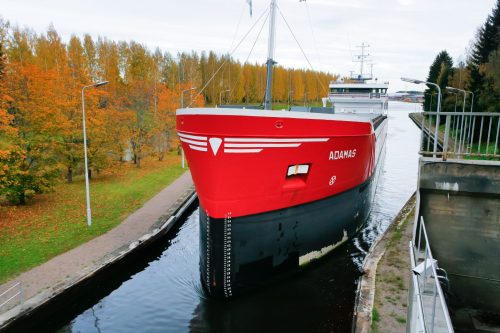
INFUTURE visit Volgo-Balt Administration in St Petersburg
INFUTURE held its 2nd working group meeting at Admiral Makarov State University for Maritime and Inland Shipping in St Petersburg on April 10, 2019. The main issues were to have a discussion related to project ongoing works and to continuation of those works in the near future. The working group meeting was attended by representatives of all Finnish and Russian partners and experts on inland waterway traffic. The project started perfectly. The first report named “Prosperous Future of Inland Waterways” had been published and can be found on Merikotka website at https://www.merikotka.fi/projects/infuture/?lang=en
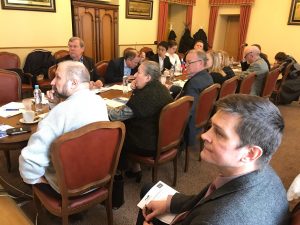
On the second day, the INFUTURE group had an opportunity to visit the Volgo-Balt Administration in St Petersburg. The Deputy Head of Volgo-Balt Administration Mr. Gennady Iosifovich Aizen personally welcomed the delegation of Finnish representatives and the Russian participants of the INFUTURE project. He spoke about the role and importance of Volgo-Balt Administration, and cited the main data characterizing its activities in the region.
The next speaker, the leading specialist of the Basin Communications Centre Mr. Alexandr Anatolyevich Zhegalin, spoke about providing communications to navigators, the development of differential correction services and the prospects for implementation of river information services. The Deputy Head of the Cartographic Service Mr. Gleb Borisovich Chistyakov reported on the main tasks facing the cartographic service, on the modern technologies for creating paper and electronic navigation charts, on the operational aspects of providing cartographic products and proofreading data to ship-owners and captains, as well as on the introduction of digital technologies on the Volga-Baltic waterway.
The Finnish part of the project was presented by Ms. Tarja Javanainen (Merikotka) and Mr. Pekka Koskinen (Finnish Waterway Association). Their presentations were devoted both to the introduction of the project “The Future Potential of Inland Waterways” itself, as well as to the condition and development of ports and inland waterways in Finland and Sweden, and their role in the Baltic Sea region.
The project participants visited the Basin Communications Centre and the Ship Traffic Control Service, where the capabilities of the Volgo-Balt Administration in the operational monitoring of the entrusted waterways and fleet traffic control were demonstrated to them. The parties expressed a unanimous opinion about the need to attract young professionals and scientists to the work and activities under the project. The completion of the second day of work marked the successful completion of the second working meeting on the INFUTURE project.
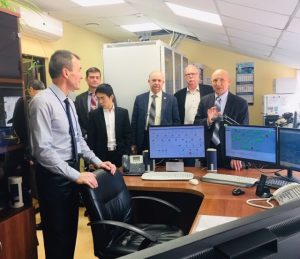
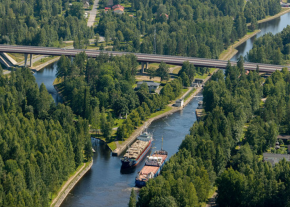
New Research Project for Development of Inland Navigation
The INFUTURE (Future potential for inland waterways) project kicks off in October for a duration of three years. Aiming at developing improvements to inland waterway transport, the project is funded by the South-East Finland – Russia CBC 2014-2020 programme beginning next month.
“We will be analysing legislation relevant to cargo transport as well as customs practices in Russia and Finland. This will be accompanied by an IT system designed to help customers home in on the most suitable service for their cargo”, says Ville Henttu, Director of Research at South-Eastern Finland University of Applied Sciences
The research team behind INFUTURE will be examining a wide range of solutions for the development of sustainable and cost-effective inland waterway transport. Project partners include South-Eastern Finland University of Applied Sciences, Aalto University, the Finnish Waterway Association, Meritaito Seahow Oy, Admiral Makarov State University for Maritime and Inland Shipping and the North-West Russia Logistic and Information Development Center. Tarja Javainen will be responsible for project coordination at the Kotka Maritime Research Centre.
INFUTURE Model Scale Ice Tests – Results From Model Scale Resistance Tests Performed at Aalto Ice Tank in Spring 2021.
Oksala, S., Li, F., & Kujala, P. (2021). INFUTURE Model Scale Ice Tests - Results From Model Scale Resistance Tests Performed at Aalto Ice Tank in Spring 2021. Project report, Aalto University.
Simulations of fairways in Lake Saimaa
South-Eastern Finland University of Applied Sciences, 2021
Study of regulation organization for inland waterway transport
Anatoly V. Burkov, Vladimir G. Nikiforov, 2021
Transshipment Hub Concept: Report on the study
Anna Kiviniitty, XAMK, 2021
Feasibility study for the development of transportation on the Saimaa canal and possible switching of transboundary cargo turnover from road and railway transport to water transport
A.L. Yushchenko, A.V. Kukharenkov, M.A. Surovyatkin 2021
Development of concept design of multipurpose dry-cargo ship for operation between the Russian Federation and the Republic of Finland through the Saimaa canal Part 1. Analysis of navigation and ice conditions in future operation areas
Marine Engineering Bureau, Volume MEB.5474, St. Petersburg
The concept design of cargo ships for inland water of Finland
Afanasiev, A., Vasilieva, A., Ushakov, K., Yatsuk, Y. Video material from on-line conference held on 23.12.2020 (in Russian)
Inland waterway transportation and its prospects in Russia and Finland
Lobodinskiy, S. 2020
Legislation and Customs Policies in Inland Waterway Transport between Finland and Russia
P. Koskela & O.Pohjonen 2020
Inland waterways fairway technologies
Vladimir Karetnikov, Sergey Rudykh, Andrey Prokhorenkov, Gleb Chistyakov, Vyacheslav Bekryashev, Zhanna Kapustyak 2020
Determination of Technical and Operational Characteristics of Ships – IW between Finland – Russia
Yury Yatsuk, Anastasiya Vasilieva & Konstantin Ushakov 2020
Management of Inland Waterway System of Russia – Admission for Foreign Flag Vessels
Vladimir Nikiforov & Anatoly Burkov 2020
Future Potential of Russian and Finnish Inland Waterways – New Business Alternatives
Anatoly Burkov, Tatiana Pantina & Pekka Koskinen 2020
Development of Inland Waterway Connections and Potential between Finland and Russia
Round Table 7 Feb 2020. Summary about the discussion (ed.) Heli Koukkula-Teixeira
Numerical simulation of ship performance in level ice: A framework and a model
Li, F., Goerlandt, F. & Kujala, P. 2020. Applied Ocean Research, Volume 102, 102288
Finite element based meta-modeling of ship-ice interaction at shoulder and midship areas for ship performance simulation
Li, F., Kõrgesaar, M., Kujala, P., and Goerlandt, F. Marine Structures Vol. 71, May 2020.
Inland waterway vessel concepts – Part 1
Lebedeva, M., Yatsuk, Y., Khomyakov, A., Lebedev, A., Afanasiev, A., Vasilieva, A., Ushakov, K., & Vetoshkin, A.
Project report concerning work package 3. Admiral Makarov SUMIS, St. Petersburg 2019.
Kasvava paine hillitä ympäristötuhoja siirtää kuljetuksia maanteiltä sisävesille
Lybeck, T. Kouvolan Sanomat mielipidekirjoitus 17.2.2019 (only in Finnish)
Paine ilmastotekoihin kasvaa
Lybeck, T. Xamk internet publication READ (Research, Education and Regional Development) 16.12.2018 (only in Finnish)
Efficiency of modern geoinformation technologies application at survey works designing on inland waterways of Russia
Karetnikov, V., Rudykh, S. & Ivanova, A. MATEC Web Conf. Volume 265, 2019 International Geotechnical Symposium “Geotechnical Construction of Civil Engineering & Transport Structures of the Asian-Pacific Region” (GCCETS 2018), Article Number 02016
The conceptual apparatus associated with multimodal transportation
Lebedev V.N. & Koroleva, E. in the Proceedings of the 18th International Conference "Logistics: Modern Trends of Development" 4-5 April 2019 Admiral Makarov State University for Maritime and Inland Shipping, St. Petersburg (pages 299-309 )(only in Russian)
Russian and Finland inland waterways future
Javanainen, T. & Pimonenko, M. in the proceedings of the 18th International Conference "Logistics: Modern Trends of Development" 4-5 April 2019 Admiral Makarov State University for Maritime and Inland Shipping, St.Petersburg (pages 275-277)
Logistics and inland waterway transport background in the INFUTURE project studies between Russian and Finland partners
Burkov, A. published in the Proceedings of the 18th International Conference "Logistics: Modern Trends of Development" held in St.Petersburg on 4-5 April 2019 (pages 261-267)
Inland waterway transportation and its prospects in Russia and Finland
Pantina,T., Volkova,T. & Lybeck,T. 2019. Admiral Makarov SUMIS & South-Eastern Finland University of Applied Sciences XAMK
Study on commercial visibility and future cargo flows on the route Saimaa Lakes-Volgo Balt
Pantina, T. & Volkova, T. 2019, Admiral Makarov SUMIS
Prosperous Future of Inland Waterways
Lybeck, T. 2019. South-Eastern Finland University of Applied Sciences
